
Roots
There is a profound connection residing within each coil, each wave, each strand of textured hair. It whispers tales of resilience, of beauty forged across centuries, of ancestral wisdom passed down through generations. To truly grasp the future possibilities for our crowns, we must first listen to these echoes from the past.
Our hair, a living archive, holds within its very structure the memory of origins, of adaptations, and of practices that sustained vitality long before modern chemistry entered the lexicon of care. It is a biological marvel, certainly, yet its narrative reaches far beyond mere keratin and disulfide bonds; it speaks to the very heart of who we are and where we come from.
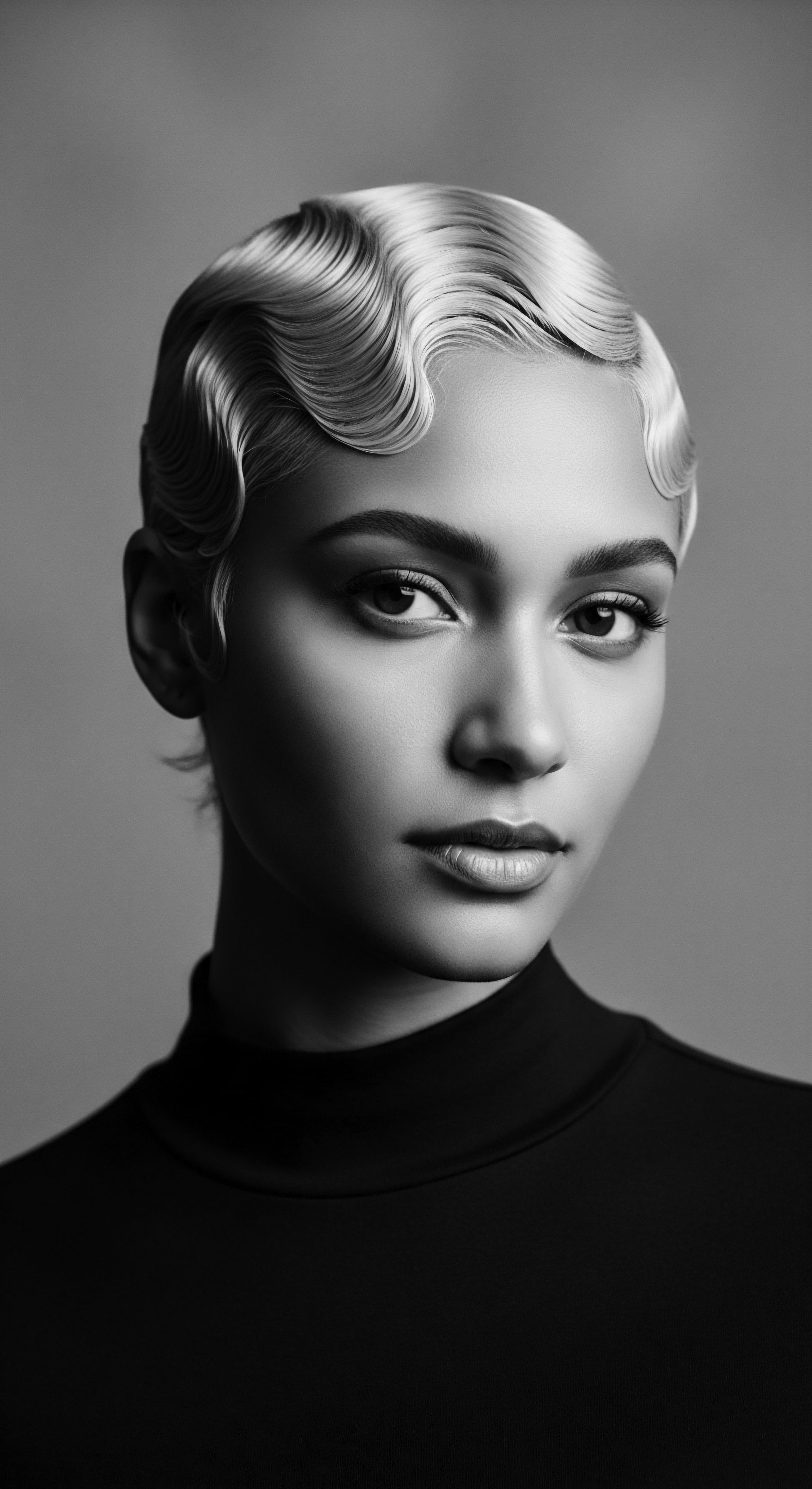
Textured Hair’s Ancient Architecture
The biological blueprint of textured hair is distinct, setting it apart from other hair types. Each strand, whether tightly coiled or gently wavy, emerges from a follicle that is often elliptical in shape, contributing to its unique helical pattern. This curvature, a characteristic common among indigenous African populations, provides natural protection against the sun’s intense ultraviolet radiation. The tightly wound nature helps to create a dense canopy over the scalp, shielding it from direct exposure.
This adaptation highlights the deep biological lineage connecting hair form to ancestral environments. Muthukrishnan Eaaswarkhanth and colleagues, writing in Human Biology, note that specific variations in genes responsible for keratin structure are present in African populations but are nearly absent elsewhere, suggesting environmental or sexual selective pressure shaped this diversity (Eaaswarkhanth et al. 2018).
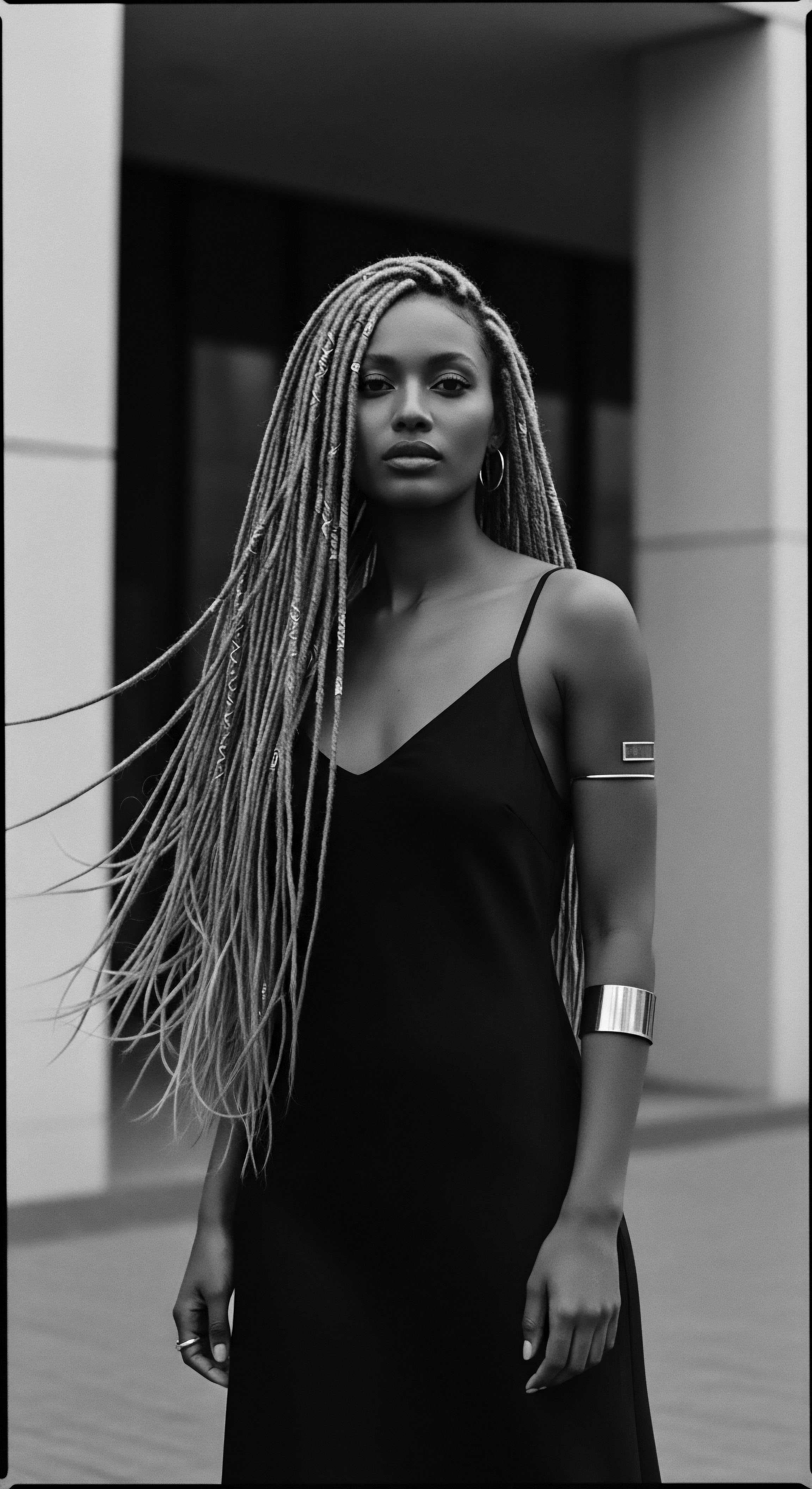
What Does Hair Anatomy Convey About Ancestral Practices?
Understanding the fundamental anatomy of textured hair offers insights into why certain traditional practices became so prevalent. The highly coiled structure, while protective, also presents specific needs. The natural oils produced by the scalp, sebum, struggle to travel down the curved shaft, leaving strands prone to dryness. This inherent tendency gave rise to centuries of practices centered on moisture retention and gentle handling.
Ancient communities recognized this need for hydration and conditioning, long before scientific terms like “sebum distribution” entered the conversation. Their solutions were pragmatic and deeply effective, rooted in observation and inherited knowledge.
The careful attention required for detangling and preventing knots in coiled hair, for example, would have naturally led to techniques that minimize manipulation. This speaks to a historical consciousness of hair preservation, prioritizing health over fleeting styles in contexts where hair was a marker of identity and well-being. Scalp health, as the origin point of the hair strand, also held significant importance in traditional care. Practices often involved direct application of nourishing agents to the scalp, recognizing its role in the overall vitality of the crown.
The language we use to classify textured hair today, while seemingly modern with numerical and alphabetical systems (like the Andre Walker hair typing system), often falls short in capturing the full spectrum of diversity and the cultural nuances. Historically, classifications were often tied to lineage, tribal affiliation, and spiritual status, as observed in various African societies (Omotos, 2018).
The enduring architectural differences of textured hair speak to ancient adaptations, shaping traditions of care aimed at preserving its unique strength and beauty.
- Melanin Distribution ❉ Higher concentrations within the hair shaft provide natural UV protection, contributing to the hair’s resilience in sun-drenched environments.
- Cuticle Layers ❉ Often more numerous and tightly packed in highly coiled hair, providing another layer of defense against environmental factors, yet also making product penetration a consideration.
- Elasticity ❉ Textured hair often exhibits high elasticity when wet, capable of stretching significantly before breaking, a property that informs gentle detangling methods.
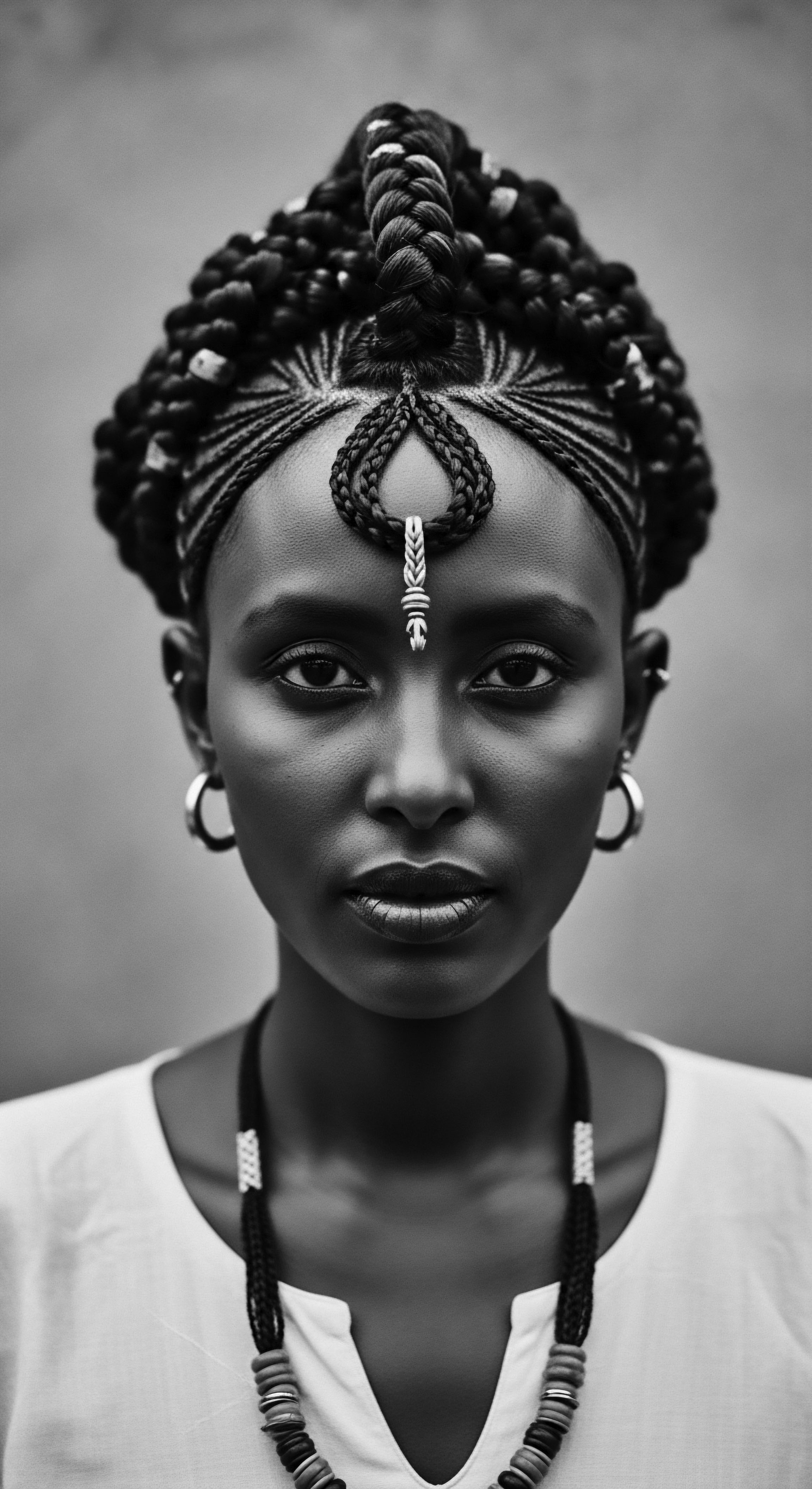
The Lexicon of Hair Heritage
Across Africa and the diaspora, the language surrounding hair holds deep cultural weight. Terms did not merely describe a physical attribute; they conveyed history, status, and aspiration. Before imposed standards, hair was a language of self-expression and community belonging.
In many ancient African civilizations, hair was a symbolic tool used to communicate social status, family history, tribal identity, and spiritual beliefs (Omotos, 2018). The very act of hair styling was communal, a moment for sharing stories and strengthening bonds (Omotos, 2018).
| Historical Term/Context Irun Didi (Yoruba, Nigeria) |
| Meaning in Heritage Literally "hair that is plaited," referring to cornrows. Signified tribal identity, social standing, and ritualistic significance. |
| Connection to Modern Protective Styling Modern cornrows preserve length, offer low manipulation, and serve as a base for extensions. They carry the lineage of intricate pattern-making and strategic hair management. |
| Historical Term/Context Otjize (Himba, Namibia) |
| Meaning in Heritage A paste of ochre, butterfat, and herbs applied to hair and skin. Signified connection to earth, wealth, and marriageable status. |
| Connection to Modern Protective Styling Emphasizes multi-purpose natural ingredients for sun protection, moisture, and cosmetic enhancement. It reminds us of hair as a canvas for cultural identity and environmental adaptation. |
| Historical Term/Context Amasunzu (Hutu and Tutsi, Rwanda) |
| Meaning in Heritage Crested or carved hairstyles indicating status, marital eligibility, or preparation for rituals. |
| Connection to Modern Protective Styling Highlights the architectural potential of hair for shaping and holding form without excessive tension, inspiring sculptural, natural styles that honor head shape. |
| Historical Term/Context These terms and practices reveal a historical continuum, where hair was not just cared for, but spoken through. |

Ritual
The rhythms of human existence, across time and geography, found expression in hair care. It was not a superficial act, but a deeply ingrained ritual, linking individuals to their community, their ancestors, and the unseen realms. These practices, honed over millennia, offer profound lessons for our contemporary approach to protective styling.
They teach us that the hands that tend to hair are not just styling; they are weaving history, connection, and intention into each strand. The very act of communal grooming, often a women’s activity in ancient African societies, solidified social bonds and allowed for the transmission of knowledge and values (Omotos, 2018).

Ancestral Wisdom of Protective Styles
Protective styling, as we understand it today, finds its deepest roots in traditional African hair practices. These styles were born of necessity, adapted for diverse climates and lifestyles, and imbued with immense cultural meaning. They allowed individuals to manage hair efficiently, reduce manipulation, and safeguard strands from environmental elements. Cornrows, for example, have roots dating back to 3500 BCE in Africa, where patterns communicated tribal identity, social status, and religious beliefs (Allen, 2021, cited in;).
During the transatlantic slave trade, these styles took on an even more profound significance. Enslaved Africans, stripped of many aspects of their identity, used cornrows not only for personal care but also as a means of survival and communication. In one striking historical example from Colombia, Benkos Biohó, an escaped royal, established an intelligence network where women crafted cornrow patterns to serve as maps, guiding others to freedom or indicating safe routes and hiding spots (Mbodj, 2020, cited in;). This demonstrates the extraordinary ingenuity and adaptive power embedded within these ancestral hair practices, making them more than mere aesthetic choices; they were acts of resistance and preservation.
The practice of braiding rice seeds into hair by enslaved women, particularly rice farmers, exemplifies how survival was braided into hair. This practical application provided sustenance during arduous journeys and preserved elements of their homeland’s culture in a foreign land.

How Do Traditional Styling Tools Inform Modern Innovations?
The tools used in traditional hair practices were simple, yet perfectly suited for their purpose. Combs carved from wood or bone, smooth stones for applying butters, and natural fibers for extensions were common. These tools guided the hands in gentle, deliberate motions, emphasizing care and precision over speed or harshness.
Today, ergonomic combs, wide-tooth detanglers, and satin-lined accessories echo this ancestral understanding of minimal friction and gentle manipulation. The emphasis remains on preserving the integrity of the hair shaft and scalp.
- Wide-Tooth Combs ❉ Mimic the large-toothed tools traditionally used for detangling, minimizing breakage.
- Natural Bristle Brushes ❉ Reflect the use of natural fibers for smoothing and distributing natural oils without causing static or unnecessary tension.
- Hair Ornaments ❉ Beads, shells, and cowries, traditionally woven into braids to denote status or ritual, resonate with modern hair jewelry, though their ancestral meanings often stand apart from contemporary adornment.
The enduring lessons of protective styling are found in ancestral wisdom, where hair became a canvas for survival, identity, and shared human purpose.
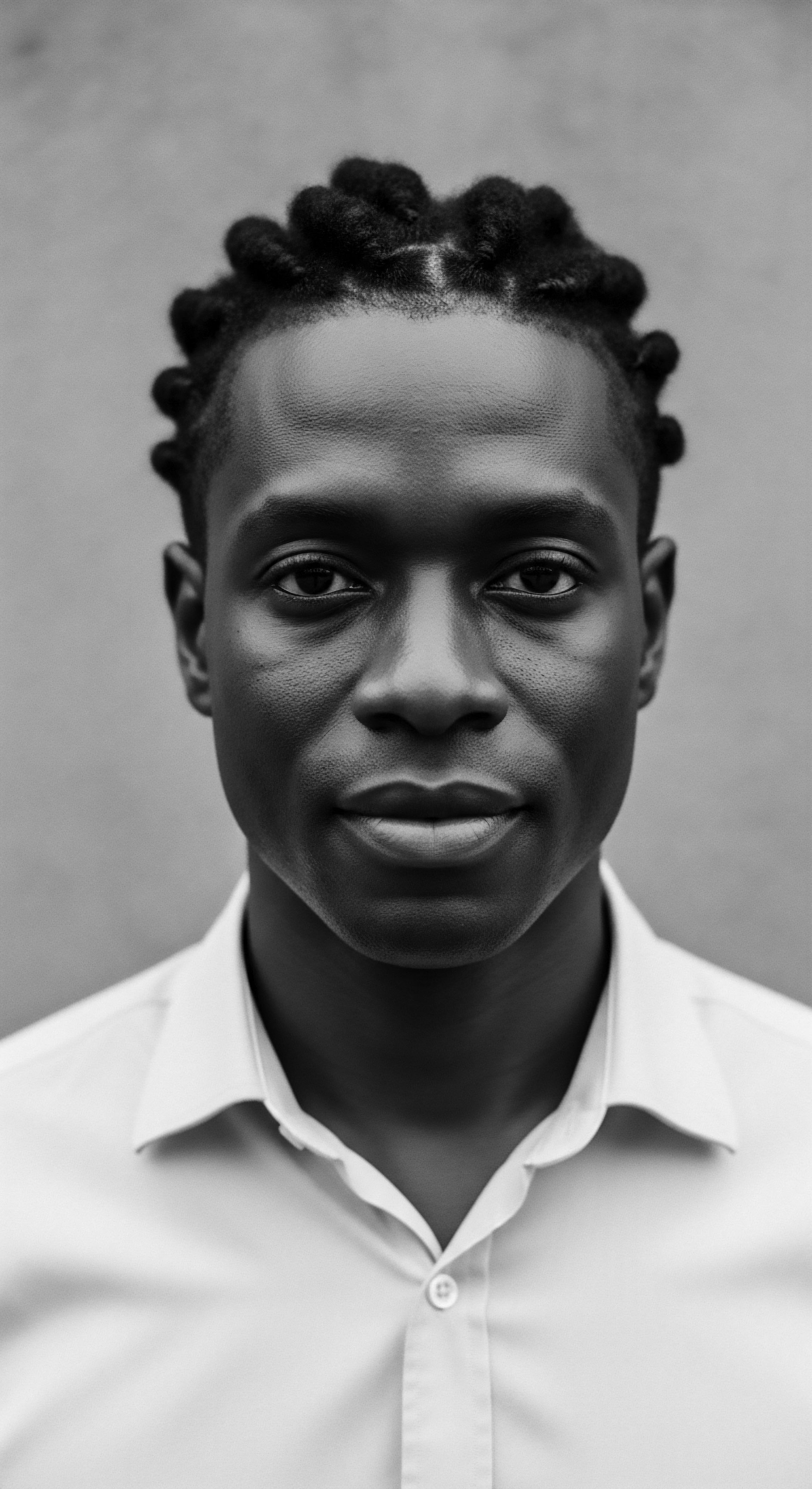
Cultural Context of Transformations
Hair transformations in traditional societies often held deep social and spiritual meaning, marking rites of passage, marital status, or periods of mourning. The process of styling could take hours, sometimes days, becoming a communal gathering that strengthened social bonds. This communal aspect reinforced a sense of belonging and collective identity, where hair care transcended individual beautification.
Such shared experiences of care and transformation serve as a powerful reminder of the community aspect of hair traditions, which sometimes is lost in today’s individualized beauty routines. The ceremonial significance of hair, seen as a conduit for spiritual energy in many African traditions, meant that hair styling was often entrusted to close relatives or respected elders (Mbodj, 2020, cited in;).
| Historical Style/Practice Cornrows as Maps (Transatlantic Slave Trade) |
| Purpose and Message Encoded escape routes and directions to freedom, sometimes hiding rice seeds for sustenance. |
| Modern Parallel/Influence on Protective Styling Modern protective styles offer versatility and discretion, allowing for personal expression while safeguarding hair. This practice highlights how styles can carry hidden strength and identity. |
| Historical Style/Practice Himba Otjize (Namibia) |
| Purpose and Message Indicated age, marital status, and connection to the earth, offering physical protection from sun and insects. |
| Modern Parallel/Influence on Protective Styling The use of nourishing, natural blends for both aesthetics and protection, prompting a reconsideration of multi-functional hair preparations. |
| Historical Style/Practice These practices demonstrate hair as a dynamic medium for non-verbal communication and cultural resilience across generations. |
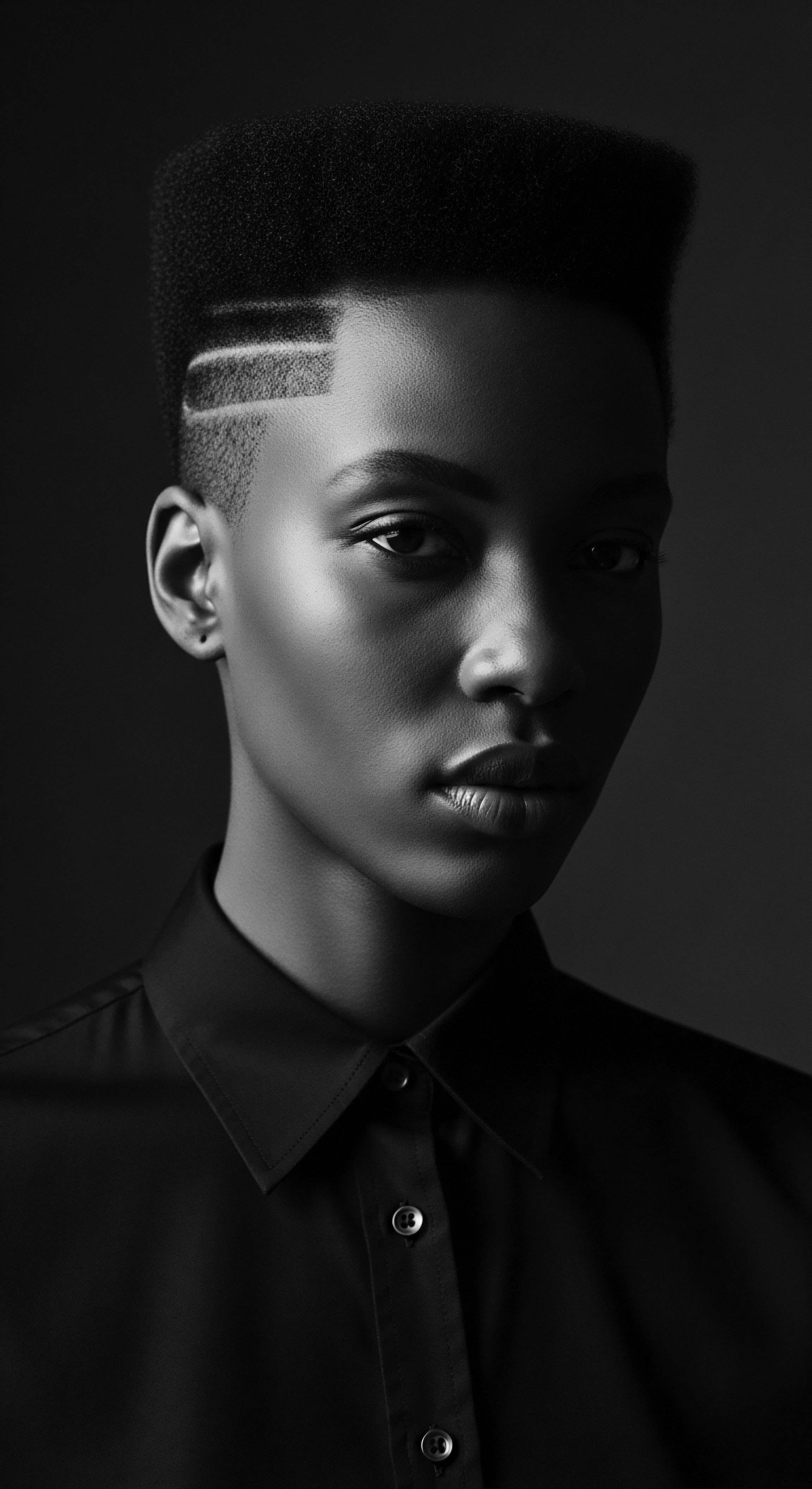
Relay
The currents of ancestral wisdom flow into the present, offering profound guidance for modern hair care regimens. Our ancestors, lacking laboratories and complex chemical formulations, observed, experimented, and codified their knowledge through generations of practice. This accumulated wisdom, particularly around the protective styling and care of textured hair, presents a rich legacy to inform our current understanding of hair health and longevity. It suggests a philosophy of care where hair is not simply adorned but honored, where its vitality is intrinsically linked to overall wellness.

Building Personalized Regimens with Ancestral Echoes
A personalized hair regimen, truly effective for textured hair, finds its most robust foundation in a deep respect for natural ingredients and consistent, gentle methods. This approach mirrors ancestral practices, which often relied on readily available plant-based oils, butters, and herbal concoctions for moisture, cleansing, and conditioning. For centuries, cultures across the globe developed hair care practices based on natural ingredients and techniques transmitted from one generation to the next (Greentech, 2023).
For instance, shea butter, extracted from the nuts of the African shea tree, has been used by various African tribes for centuries for its moisturizing and protective properties against harsh environmental conditions (Gege, 2023, cited in;). This traditional ingredient provides a parallel to modern deep conditioners and leave-in treatments, highlighting the long-standing understanding of the need for occlusive agents to seal in moisture for coiled hair. Similarly, hot oil treatments, using plant oils like coconut, almond, and olive, were common in ancient times as protective and nourishing treatments for dry, brittle hair (Gege, 2023).
The wisdom suggests that hair care is a continuous process, not a sporadic one. Consistency was key in traditional regimens, whether it was daily application of nourishing butters or weekly communal styling sessions. Modern protective styling gains from this understanding; styles like braids, twists, and locs, when installed with care and maintained regularly, reduce daily manipulation, minimize breakage, and promote length retention. This scientific benefit validates the protective function that has been understood for generations within African communities.

Do Nighttime Rituals Hold More Than Practical Value?
The nighttime sanctuary for textured hair, characterized by the use of bonnets, scarves, and silk pillowcases, has practical benefits ❉ it reduces friction, prevents moisture loss, and helps preserve styles. Beyond these immediate advantages, however, these rituals carry a deeper resonance. They echo ancestral practices of hair covering, which were often symbolic of modesty, protection, or spiritual reverence. For example, headwraps gained significance during slavery as a means of both protecting hair and subtly defying imposed European beauty standards (Afriklens, 2024).
The act of wrapping hair at night, perhaps a simple routine for many today, can be viewed as a continuation of these historical acts of preservation and self-care. It’s a quiet acknowledgment of the crown’s intrinsic worth, safeguarding it not just from pillow friction, but from the historical forces that sought to diminish its beauty and significance. This deliberate act of protection allows for a continuum of care that spans day into night, mirroring the holistic approach to well-being found in ancestral philosophies.
- Silk or Satin Bonnets ❉ Offer a low-friction surface that prevents breakage and retains moisture, mirroring traditional hair coverings used to preserve styles and protect the scalp.
- Pre-Sleep Braiding/Twisting ❉ Reduces tangling and preserves curl patterns, a direct descendant of ancestral practices for managing hair overnight and preparing it for the next day.
- Scalp Oiling ❉ Continues the ancient practice of nourishing the scalp directly, believed to be the wellspring of healthy hair growth and often connected to spiritual well-being.
Through consistent care and mindful rituals, modern textured hair regimens find strength in the echoes of ancestral wisdom, transforming daily acts into acts of legacy.

Addressing Hair Concerns Through a Heritage Lens
Many common textured hair concerns, such as dryness, breakage, or scalp irritation, have been addressed by ancestral communities through generations of observation and practical application. Their solutions often relied on natural elements and a deep understanding of the hair’s needs within its environmental context. For instance, the traditional use of fermented rice water in Asian traditions, now experiencing a resurgence, exemplifies how long-standing practices can offer demonstrable benefits like repairing damaged hair and fostering resilience through compounds like inositol (Greentech, 2023).
This approach stands apart from a singular reliance on synthetic quick fixes. It instead promotes a symbiotic relationship with nature and patience. The understanding of hair as a living entity, responsive to consistent, gentle care, is a central tenet that connects historical practices to contemporary problem-solving. This includes techniques for cleansing without stripping, conditioning deeply, and styling with minimal tension, all of which aim to preserve the structural integrity of the hair.
The emphasis on hair health as an aspect of overall well-being is a core concept that ties ancestral wellness philosophies to modern approaches. Traditional medicines, such as Ayurveda, prioritize harmony between body and mind, utilizing plants and herbs for radiant skin and hair (Greentech, 2023). This perspective encourages us to consider nutritional choices, stress management, and even spiritual practices as contributing factors to hair vitality, recognizing that the strands on our heads are intertwined with the health of the whole person. This holistic view of hair wellness, deeply rooted in African traditions, sees hair care as a practice that nourishes both scalp and soul, with treatments infused with herbal remedies and ancestral wisdom (Laya’s Touch Holistic Hair Care, 2024).

Reflection
The journey through the heritage of textured hair, from its intrinsic biology to its profound cultural meanings, reveals a story of enduring strength and unparalleled beauty. The question of whether traditional hair practices can inform modern protective styling does not invite a simple yes or no; it beckons us to acknowledge a living, breathing lineage. Our ancestors, through their ingenuity, their sacred regard for the crown, and their unbreakable spirit, laid the foundational principles of protective styling. They taught us the wisdom of gentle handling, the power of natural elements, and the profound connection between hair and identity.
Roothea stands as a testament to this continuum, a living archive dedicated to preserving and sharing this rich heritage. Each strand, truly, holds a soul—a whisper of generations past, a vibrant expression of the present, and a guiding light for futures yet to unfold. By weaving ancestral knowledge into our contemporary care, we not only honor the resilience of those who came before us but also cultivate a deeper, more resonant understanding of our own crowns, recognizing them as cherished symbols of heritage and enduring self-acceptance. The journey of textured hair is an ongoing narrative, written with every thoughtful touch and every celebrated curl.

References
- Afriklens. (2024). African Hairstyles ❉ Cultural Significance and Legacy.
- BLAM UK CIC. (2022). The history of Black Hair.
- Eaaswarkhanth, M. et al. (2018). Why Do Some People Have Curly Hair and Others Straight? Human Biology .
- Gege The Afro Curly Hair Coach. (2023). CHECK OUT THESE TRADITIONAL HAIRCARE TREATMENTS.
- Greentech. (2023). Legacy of Traditional Medicines & Ancestral Rituals in Modern Cosmetics.
- Laya’s Touch Holistic Hair Care. (2024). A Sacred Approach to Hair Wellness and Transformation.
- Omotos, A. (2018). African Hairstyles – The “Dreaded” Colonial Legacy. The Journal of Pan African Studies.
- ResearchGate. (2023). Cornrow ❉ A Medium for Communicating Escape Strategies During the Transatlantic Slave Trade Era ❉ Evidences from Elmina Castle and Centre for National Culture in Kumasi.
- Royaltee Magazine. (2021). Braids, Plaits, Locs ❉ The History of Black Protective Hairstyles.
- Sartorial Magazine. (2025). Braids, Locs, and Beyond ❉ The Beauty and History of Protective Styles.
- the afro curly hair coach. (2022). Cornrows and The TransAtlantic Slave Trade.
